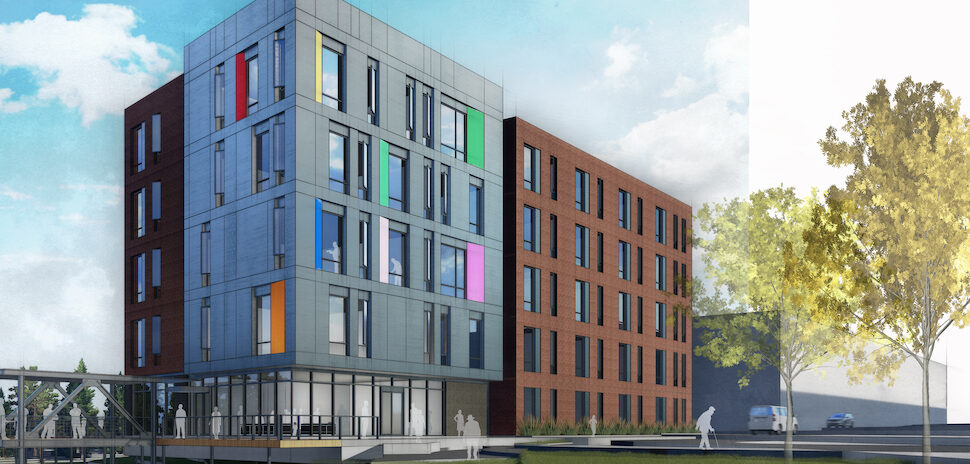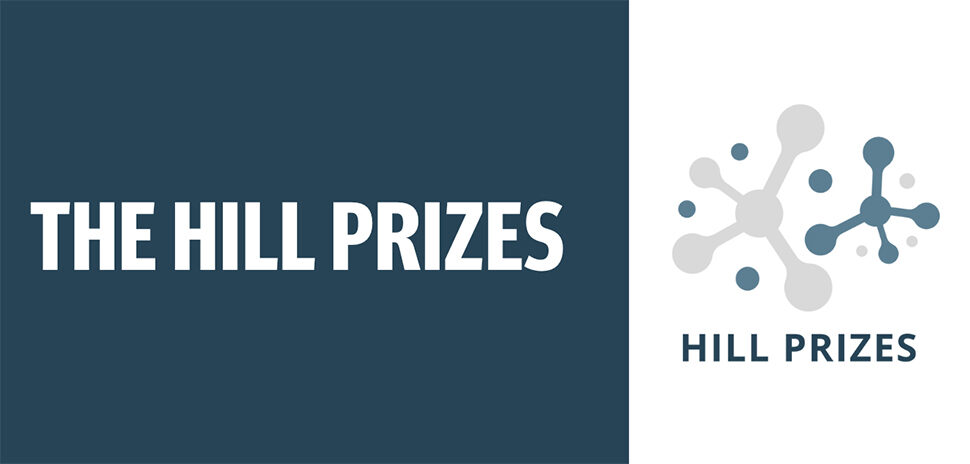At a time when more girls and women are being encouraged to enter the science, technology, engineering, and math fields, the ones living in North Texas have a pioneering role model close by in Sandra Bond Chapman, PhD. A native Texan, Chapman is a cognitive neuroscientist and founder and chief director of The University of Texas at Dallas’ Center for BrainHealth, which is celebrating its 25th anniversary this year.
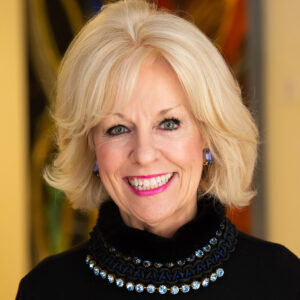
Chapman describes the brain as the “most powerful engine in the known universe” because it is constantly solving new problems. “Our brain is wired to innovate,” she says.
Under Chapman, who’s been at UTD for nearly four decades, the nonprofit, cognitive neuroscience research institute works to prove that cognitive function can be enhanced and extended if people will become more proactive about their own brain health. The center has grown substantially over the years, thanks in large part to the founder’s combination of smarts, honeyed Southern charm, and politically astute networking and fundraising skills.
In advance of BrainHealth Week, which Dallas Mayor Eric Johnson has proclaimed for Feb. 19-24, we sat down with Chapman to discuss the institute’s past, present, and future.
Was the center your idea from the beginning?
Yes, I’ve long had a dream of helping discover if the brain can actually be strengthened in people. That’s mainly because, when I was a clinician, I saw people’s brains recover far beyond what we were taught in our neuroscience classes. And I thought, ‘I want to start a center that can do the rigorous science to uncover the upward potential of the human mind.’ So, for almost six years I went to my dean at UTD, begging to start the center. Finally, one day in 1999, he said, ‘OK, go ahead and start your center.’ When he said yes, I took off running.
No one was doing this type of thing at the time?
Yes—and there’s still no one else doing it. That’s what’s surprising. There are other centers for brain health that have popped up, but if you look at them, they’re [concentrating on] Alzheimer’s disease, or depression, or brain injury. We’re the largest center in the world that’s focused uniquely and comprehensively on the things you can do to build stronger brain function.
We’re sort of what I call ‘left of boom,’ which is a military term that means being prepared before something happens. So, brain health is before something happens to your brain like an injury, or a stroke, or you’ve got memory problems. We’re focused on helping people like you, people like your children—you know, across the lifespan—to know what you can do.
One of the things I say is, we’re proactive and preventive about our heart, our eyes, our skin, our teeth, our lungs—and yet, not our brain. And our brain is our greatest asset. It’s the only major organ that’s irreplaceable. And yet we only wait till after the ‘boom’ happens, and then we start thinking, ‘I need to do something.’ So, that’s the Center for BrainHealth.
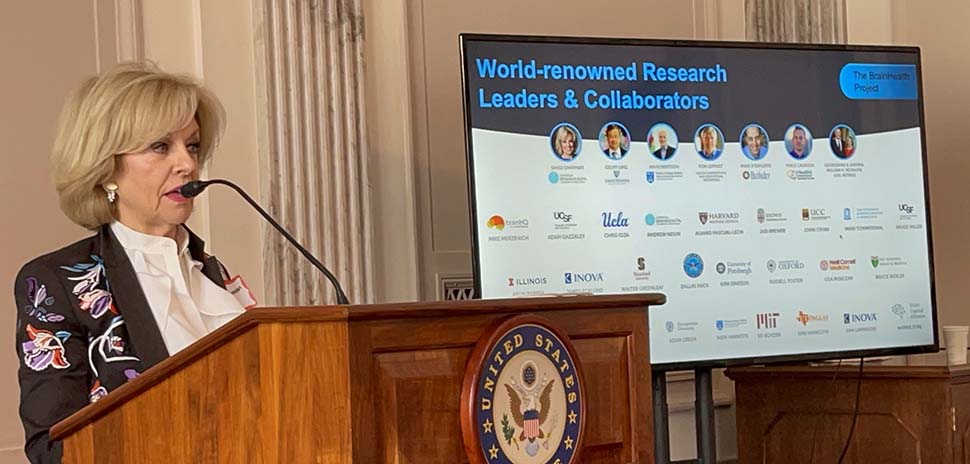
Chapman has led UTD’s Center for BrainHealth since its founding 25 years ago. According to Chapman, “The concept was so new in 1999, we got a trademark on it.” [Photo: Center for BrainHealth]
How has the institute been ‘proactive’ about our brains?
It was really developed to do the science first. We’re not really a clinic or something, where people come. It was really more about, ‘Let’s first ask questions like: Can you measure the brain getting better?’ Because 99% of all the measures that had been developed were developed to detect brain decline. For example, do you have memory problems? Do you have cognitive impairment? Do we see reduced IQ? Do we see depression loss? But not, ‘Do we see things getting better?’ So, we wanted to see if we could develop measures to show whether, regardless of where someone starts, their brain can be improved. And then we wanted to see, can we find the neural markers, the brain changes, the structural changes in the brain—as it gets better, are there functional changes? That’s what we’ve focused on for the last three decades, and now we’re translating it to help people.
How large was the center at its founding, compared to where you are today?
When we started, we were in about 2,000 square feet of space in a back room at UTD’s Callier Center for Communication Disorders, on Inwood Road in Dallas. And we had about 26 people. We called it the clown car because, at the table, when you got up from your seat, people would take it, because we didn’t have much space! Even the UTD provost called us the ragtag team. Today, one of the accomplishments I’m proudest of is that we’ve been able to pull in collaborators from all over the world to be part of what we’re doing. Whether they’re from Johns Hopkins or Berkeley or Stanford or Oxford or Trinity University, they’re working with us because they say our focus is so unique. So, we’ve grown from 26 to more than 150 scientists and research clinicians, including our research collaborators from leading universities across the U.S. and Europe.
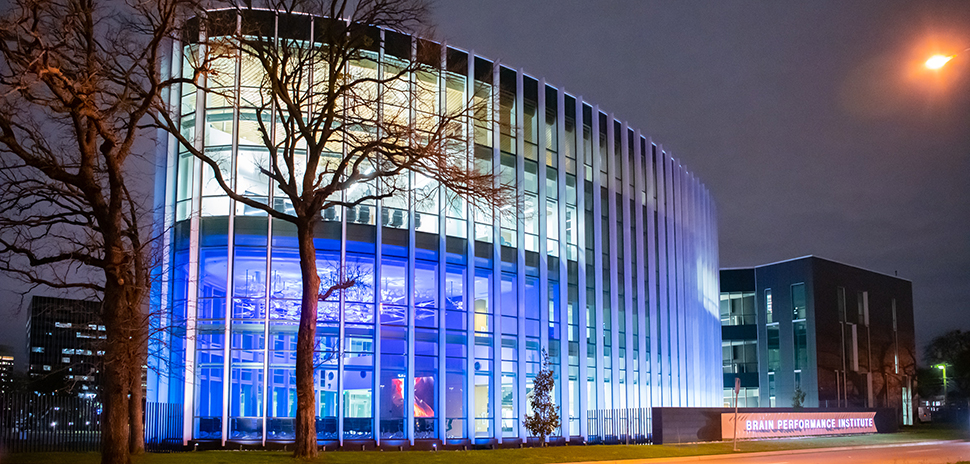
The Brain Performance Institute at the center’s 5-acre campus on Mockingbird Lane opened in 2017. [Photo: Center for BrainHealth]
How did you go from that back room at Callier to the 5-acre campus you’re now in on West Mockingbird Lane?
I was at the Callier Center until 2006, when we moved into the current Center for BrainHealth research institute on Mockingbird. Eventually the university regents said, ‘Your science is so good, you need to help people. We want you to take your science off the shelves and translate it to make a difference in people’s lives.’ So, that’s when we started working to launch the Brain Performance Institute, which is the center’s ‘translational’ arm, so we can move science immediately out of the laboratory into helping people.
Retired Admiral Bill McRaven was chancellor of The University of Texas system when standing up the Brain Performance Institute was approved by the regents in 2015. At the groundbreaking for the building, McRaven challenged and inspired me to launch a bolder initiative that would create a brain health movement/revolution, much like the physical fitness movement in the 1960s, to reach people around the world. He and his wife Georgeann are [still] our national spokespersons. Today, the campus has three buildings: the Center for BrainHealth research institute; the public-facing Brain Performance Institute, where we train people to do the strategies; and the Sammons BrainHealth Imaging Center, where we’re uniquely looking at markers of a brain getting better.
How has your annual budget grown over the last quarter century?
I don’t even know what our annual budget was when we started. I don’t think we even thought about a business plan! We were just writing a lot of grants, research grants, trying to get money. But right now, the annual budget ranges from $13 million to $15 million. It comes from state and federal grants, from the university, and from private philanthropy.
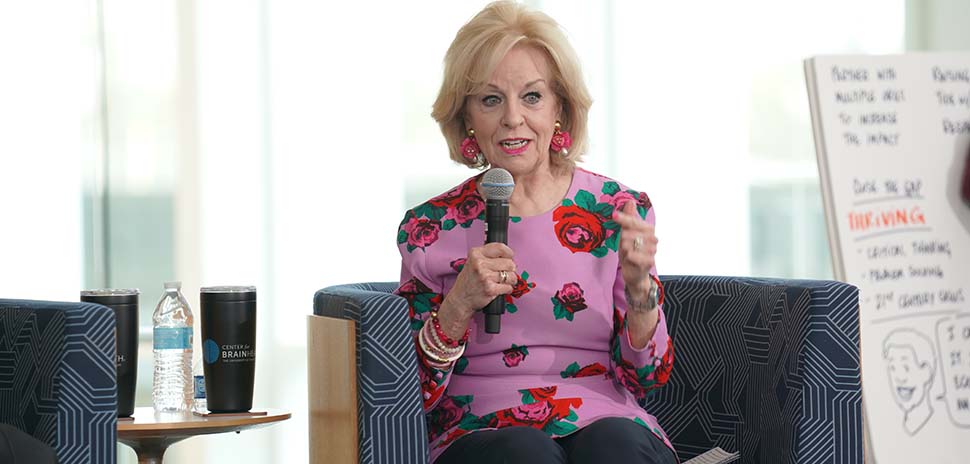
Chapman addresses a meeting at the Center for BrainHealth. [Photo: Center for BrainHealth]
What are some of the institute’s initiatives that you’re most energized about these days?
I’d begin by citing the breakthroughs we’ve come up with from The BrainHealth Project over the last three years. The project, which was inspired by McRaven’s comments, is really our landmark study. Its purpose is to do a rigorous study to see if we can achieve for the brain what’s been done for the heart. Our goal is to enroll in the study 120,000 healthy people from age 18 to the end of life—you’re never too old!—and follow them for a minimum of 10 years.
We now have more than 33,000 people registered in the project from every state and 60 countries. We do it online, where people can take an index, can get coaching, and take advantage of [various brain-efficient] strategies. As for the science of what we’re already discovering: No. 1, we’ve developed a patent-pending composite BrainHealth Index. It’s measuring the multiple components that fit into making you thrive with your brainpower. I’m most excited about having the first patent-pending, composite index showing the brain getting better.
Why do you call it a landmark study?
It’s a landmark because it will change the way we look at our brain, to think about it not as, ‘Oh, I’m worried about what’s wrong with it,’ but, ‘Hey, brain, how can I make you stronger?’ We want people to have the simple tools to know how to be agents of change for their brain, to be able to have confidence in it, and to really be motivated. Right now, every single person still has stigma about their brain, because we think about IQ testing and mental health testing and SATs and so on. But they don’t think about, ‘Oh, can I see if my brain is stronger today than it was last year?’
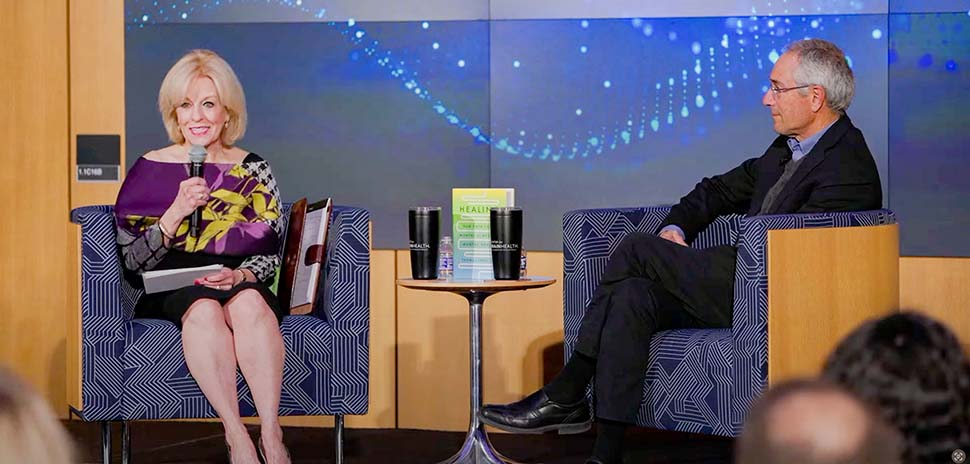
During a session at the institute, Chapman chats with guest speaker Dr. Tom Insel, a former director of the National Institute of Mental Health. [Photo: Center for BrainHealth]
Was the study your idea, inspired by McRaven’s words?
It’s my idea, but it was also Dr. Geoffrey Ling, who’s one of my co-leaders, who’s at Hopkins and was actually a director at DARPA [the Defense Advanced Research Projects Agency]. And he said, ‘Sandi, if we’re going to change the way people look at their brain, we need to do a rigorous study and follow people and show that.’ Mark D’Esposito from Berkeley, one of the main neurologists that started the field of cognitive neuroscience, is also a co-leader. And then there’s Ian Robertson from Trinity College in Dublin, who’s been looking at neuroplasticity [the ability of the brain to change itself in response to learning] for the last 35 years. They and our other 30 scientists sat down and we figured out, ‘How can we show that people can improve their brain in an “acceptable” way?’ So that it’s not just a lot of hype, but actual science behind what we believe in.
Are there vetted research papers coming out of the study?
Yes, we’ve got three that have already come out within these three years, which is pretty quick time. And we’re in the process of [preparing] another larger one. But yes, we’ve showed that 75% of the people who took advantage of the strategies actually improved. And they all started at different points. The good thing about your brain is you don’t have to go off and spend an hour three times a week, like with physical fitness. You use your brain anyway. So, the project has given you the tools for how you get your mental energy and use it more effectively and stop the toxic brain habits, like multi-tasking and constant distractions.
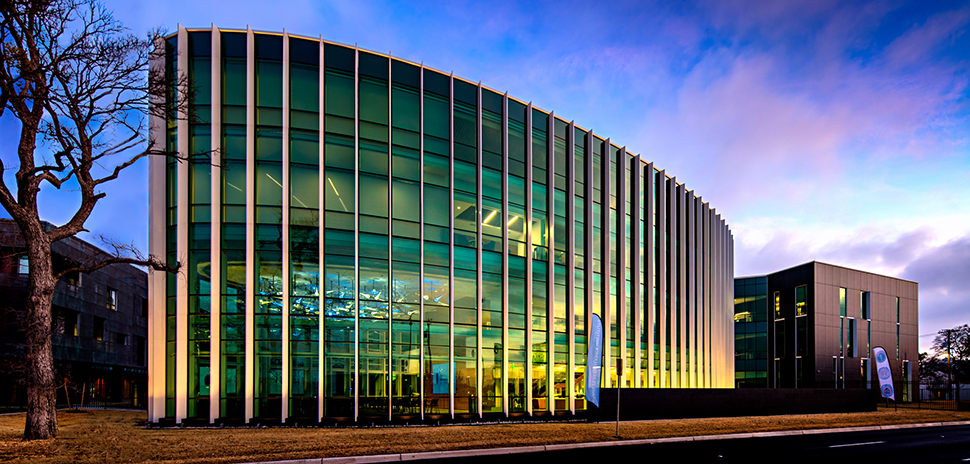
University regents told Chapman her scientific research was so valuable that she needed to translate it to benefit people’s lives, leading to the creation of the Brain Performance Institute. The BPI’s purpose is to “move science immediately out of the laboratory into helping people,” she says. [Photo: Center for BrainHealth]
What other big signature projects at the center are important to you right now?
The other big thing that we’ve started is my Brainomics Venture. Brainomics is a word I coined 10 years ago in a book to put a value on the economic benefits of better brain health. Because when you put a value on it, people tend to say, ‘Oh, maybe I need to pay attention to that.’ Right now, we put a cost burden on it. We know the cost of Alzheimer’s disease, we know the cost of depression. But if you were to have a better brain, what would the cost benefit of that be? So, to begin, I’ve hired Dr. Andrew Nevin, an economist who went to Oxford and Harvard. He’s said that the way for a society to thrive is going to be through its brain skills, and that we’ve moved out of a technology economy and into a brain economy. That’s how we’re going to solve the complexity of problems that we have.
So, we’re adding Brainomics to all of our studies—to look, for example, at what would happen if our youth continue to thrive in school and do well, what is the cost benefit? In the workplace, what would the cost benefit to a company be if you reduce burnout? In the military, if we can help intercept depression before it gets full-blown and suicidal, what would be the cost benefit? We’ve got [former Dallas Fed president and CEO] Rob Kaplan involved on the Brainomics Venture board, as well as [former Dallas mayor] Tom Leppert and Heather Kreager [retired CEO at Sammons Enterprises].
Our Adolescent Reasoning Initiative is another project we’re really excited about. We’ve reached almost 95,000 youth in public middle schools, mostly in underserved communities. When we teach them how to engage in innovative thinking, it not only improves their grades, it improves their statewide scores and improves their graduation rates. The ARI is our largest study.
I see you’re launching something called the Great Brain Gain this year. What’s that about?
We’re just starting that now. We have a text challenge, where we’re trying to reach 3 million people, because people don’t know where to start to strengthen their brain fitness. When we did a national survey, we found that people know it’s possible to change your brain, but 73% don’t know where to start. So, the Great Brain Gain is a way to get them started with just some simple steps. We’re starting with a text challenge. All you have to do is text the word ‘gain’ into this number: 888-844-8991. And then every day for seven days, you get a tip of what you should do, and then you get the science behind what that does for your brain. It’s simple. I think we may have about 20,000 people that are in it already.
What’s the idea behind your brainchild BrainHealth Week, which Dallas Mayor Eric Johnson has proclaimed for Feb. 19-24?
We’re trying to increase awareness and change the conversation—it’s really kind of a first step for people to realize there’s something you can do to make your brain stronger. Most people have some idea, but they don’t really know what it all means. That’s what BrainHealth Week is all about. We’re having an invitation-only summit, where we’re bringing in Ariana Huffington, Sanjay Gupta, and McRaven; we’ve also got McKenzie, as well as Jesus Mantas, who’s a global managing partner for IBM. So, the summit really is to bring people together. That second day, we’re going to have sort of focus groups, where people brainstorm things they can do when they go back to their spheres of influence to change the way people look at their brains. We want it to be an ‘action-ist’ type of meeting, versus just, ‘Oh, that’s curious.’
I understand you’ve been collaborating some with Capital Factory, the VC firm and accelerator?
They’re actually part of our summit. There are all sorts of devices and things that can measure your brain, and sleep aids, and stimulators. So, Capital Factory and Brian Chambers are a big part of this; we wouldn’t do anything without them. To really just accelerate what innovation is all about—their mindset is exactly where we are, too. And we know that the things that can help—neurotechnology, AI—actually will catapult brain health. If we could offload to AI technology a lot of low-level tasks, think about how much more potential the human brain would have. And then we start upskilling people to be able to do what the brain does, which is innovate. And they realize, ‘Yes, I can do that. I don’t have to be stuck in this rote job; let technology do that and let me design my brain to do more.’ We want people to realize our brains can do so much more to change with the changing times.
Have you been working with many of the region’s tech startups and entrepreneurs to advance your work?
We follow and interface with them and are interested in any new technology that could help with this exponential impact of the brain. One of the individuals we’re working with out of Switzerland may commercialize some of the work that we’re doing with the BrainHealth Index and training, so they can make it widely available. We’re not partnering right now completely with some of the things being done [in the startup world], but we stay closely connected, in part to find out: Where’s the messaging? We’re also very interested in working with them to teach us, because an entrepreneur doing these things has a different type of brain.
Besides apps that we’re looking at developing, we have a virtual reality program called Charisma, which is one of our other big initiatives. Charisma Virtual Social Coaching is a personalized, avatar-driven social skill training program where people go into a virtual space and interact. We measure the biophysical—how much stress you feel when you’re interviewing for a job, for example, or trying to meet a new person, or go on a date. We’ve been able to help people with social anxiety relate to people from different cultures, for instance—to down-regulate the emotional stress, to deal with it in a proactive way.
One thing I’ve noticed over the years is that you seem comfortable and diligent with fundraising for the center. What’s your secret to persuading people to give money?
I think what it is, is vision. People in Texas love a bold vision. They like creativity, and they like someone who it feels like will make it happen. This center is something that’s so unique, and it’s not being done anywhere else in the world, and we have the science behind it. I think the science is really what motivates people to give. So, it’s a pretty easy story to tell.
The other reason, I think, is that I’m an open collaborator. Scientists generally tend to hold things tight to themselves and say, ‘No, I’m the one.’ I’m really open to collaborate with anyone who’s willing to see things in a different way. So, I’m a curious person, a bit of a visionary, and I’m a tiger by the tail!
I really want to help people make their brains better, to realize their untapped potential. It’s an exciting time. I think we are in a place where we could do a moonshot for people to optimize their brain potential, to harness their upward potential. It’s going to take everyone working together—corporations in healthcare, education, the government—just like with the COVID-19 vaccine. It wasn’t a single person or a single company that developed that, it was thousands working from all spheres of influence.
What makes you think we’re ready for that now with the brain?
Because I think the science is there. We can holistically measure brain health and the factors that contribute to it; we have brain biomarkers. I want people to know that they are the agent of change for their brain, if they will make the effort. There’s no magic pill.
Finally, Sandi, you’ve been so closely associated with the Center for BrainHealth these past 25 years, I’m wondering about the leadership plan for the institute once you retire?
In fact, we just went through this process. If I’m in a car accident tomorrow, what’s going to happen? The answer is, we have a powerful executive team of 12 people [including me] that meets once a week and makes the decisions. So, I think my succession plan is multiple people wearing the many hats that I’ve had to wear over the years. No single person will do what I do now, because they can’t—and they won’t need to.
Quincy Preston contributed to this report.
![]()
Get on the list.
Dallas Innovates, every day.
Sign up to keep your eye on what’s new and next in Dallas-Fort Worth, every day.










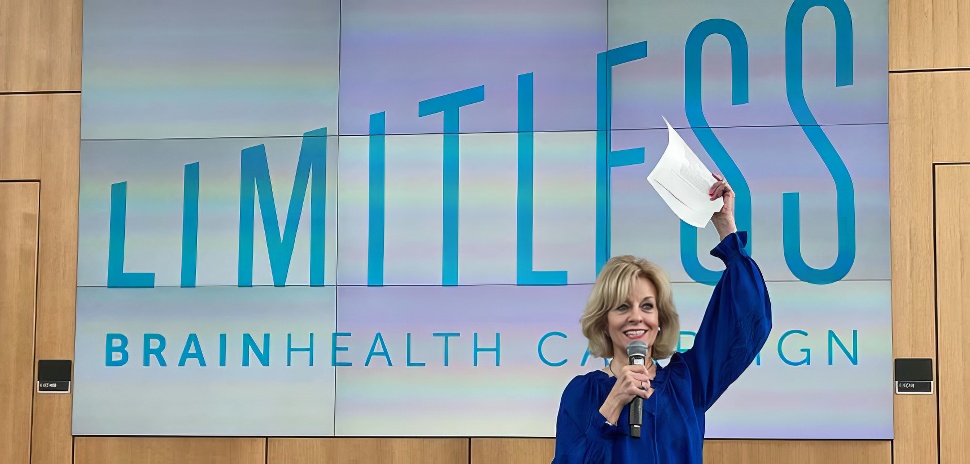

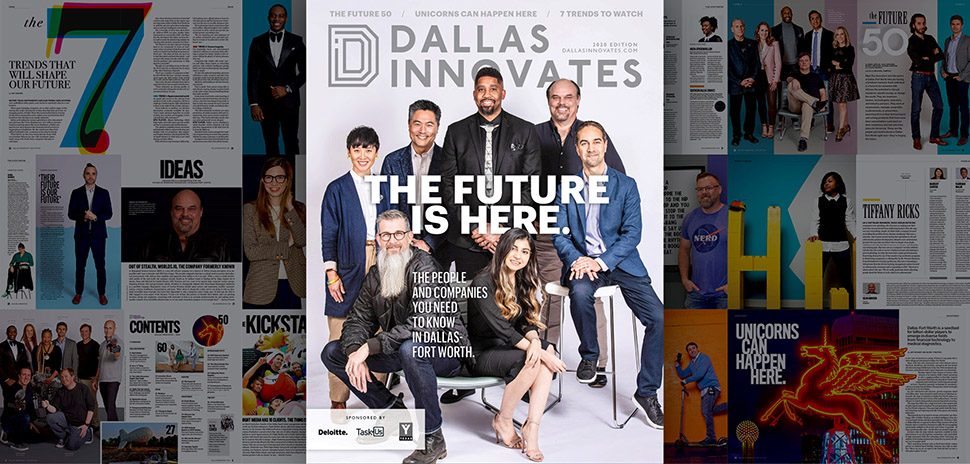
![From left: Ezi Negus, Okigwe Creations; Greer Christian, PureNRG Cycle; Awah Chai, Offworld Coffee; Kimberly Matthews, Holy Rollie Pastry Shop; and moderator Tarsha Hearns, The DEC Network. [Photo: The DEC Network]](https://s24806.pcdn.co/wp-content/uploads/2023/08/Panel-970x464.jpg)
